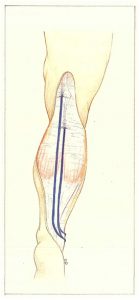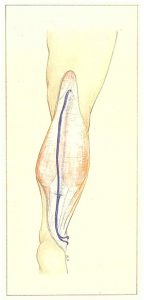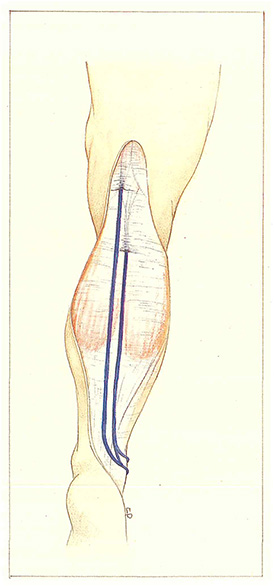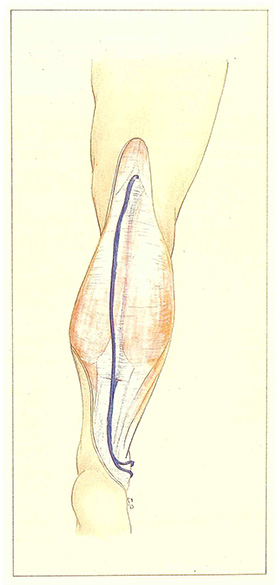Accessory short saphenous vein
Duplications of the short saphenous vein are much less common than duplications of the long saphenous vein. These duplicates have a small diameter and are sometimes missed on an excessively rapid ultrasound examination. Their parietal composition is similar to that of the main short saphenous trunk, with a linear wall of constant thickness. They travel parallel to the short saphenous vein.
Their level of anastomosis with the deep network and their site of transfascial penetration are variable and may differ from those of the main short saphenous vein. Two types of accessory short saphenous veins can be described according to the depth of their course:
- Accessory short saphenous veins situated in the same plane as the main short saphenous vein (Figure 86). These are more easily identified and more accessible to treatment;

- superimposed accessory saphenous veins, situated more deeply than the main short saphenous vein (Figure 87). In this case, the main short saphenous vein has a small caliber (2 to 3 mm) and travels in a fascial sheath between the two gastrocnemius muscles. In the presence of reflux, the suprafascial accessory saphenous trunk will become ectatic (4 mm and more) and can then be mistaken for a solitary short saphenous vein.
When these accessory veins have independent saphenopopliteal junctions and when the main short saphenous vein is situated below the popliteal crease, a “new saphenous” vein may appear after stripping, as if a surgical procedure had never been performed.

Further reading
Browse N.L., Burnand K., Thomas M. Diseases of the veins. Edward Arnold, Londres, 1988.

